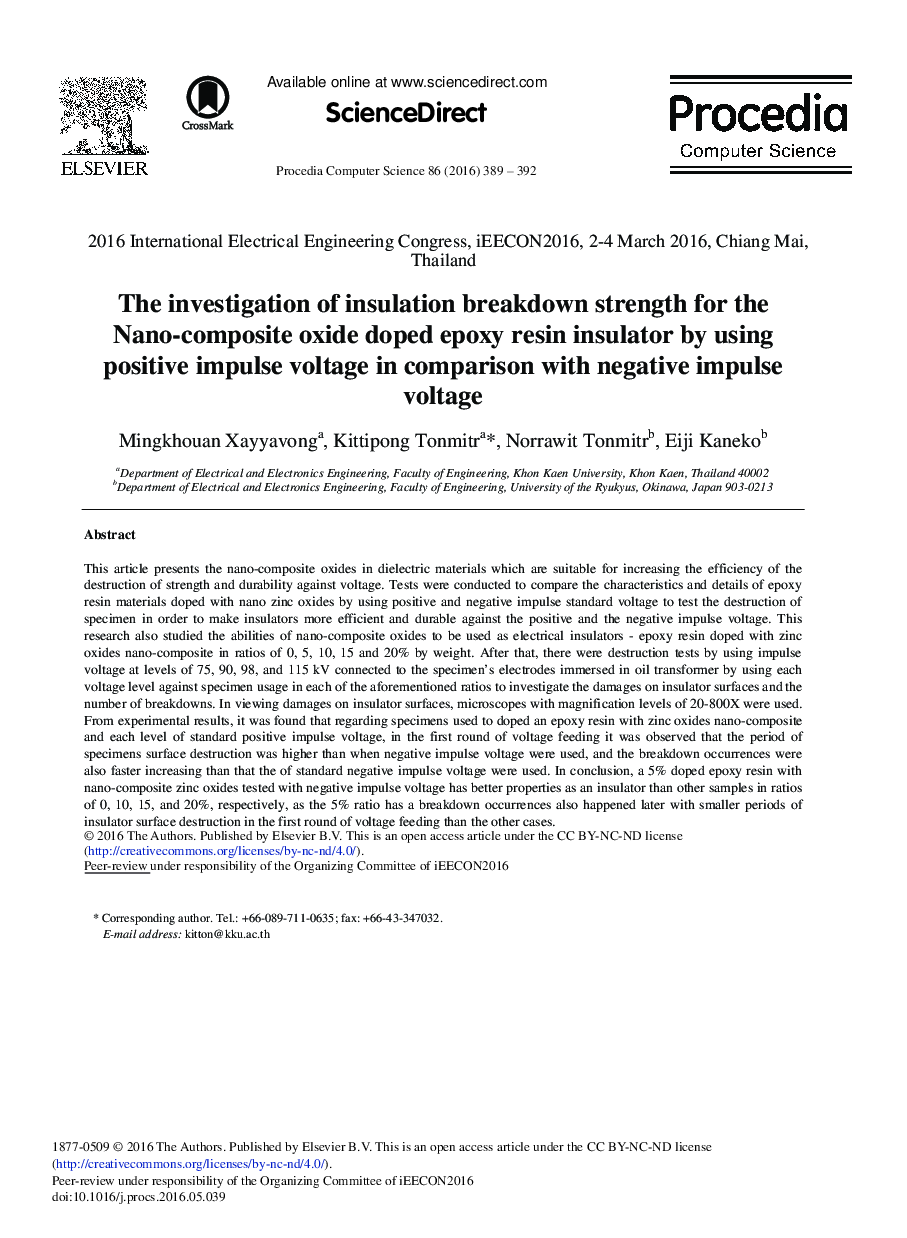| کد مقاله | کد نشریه | سال انتشار | مقاله انگلیسی | نسخه تمام متن |
|---|---|---|---|---|
| 486961 | 703534 | 2016 | 4 صفحه PDF | دانلود رایگان |
This article presents the nano-composite oxides in dielectric materials which are suitable for increasing the efficiency of the destruction of strength and durability against voltage. Tests were conducted to compare the characteristics and details of epoxy resin materials doped with nano zinc oxides by using positive and negative impulse standard voltage to test the destruction of specimen in order to make insulators more efficient and durable against the positive and the negative impulse voltage. This research also studied the abilities of nano-composite oxides to be used as electrical insulators - epoxy resin doped with zinc oxides nano-composite in ratios of 0, 5, 10, 15 and 20% by weight. After that, there were destruction tests by using impulse voltage at levels of 75, 90, 98, and 115 kV connected to the specimen's electrodes immersed in oil transformer by using each voltage level against specimen usage in each of the aforementioned ratios to investigate the damages on insulator surfaces and the number of breakdowns. In viewing damages on insulator surfaces, microscopes with magnification levels of 20-800X were used. From experimental results, it was found that regarding specimens used to doped an epoxy resin with zinc oxides nano-composite and each level of standard positive impulse voltage, in the first round of voltage feeding it was observed that the period of specimens surface destruction was higher than when negative impulse voltage were used, and the breakdown occurrences were also faster increasing than that the of standard negative impulse voltage were used. In conclusion, a 5% doped epoxy resin with nano-composite zinc oxides tested with negative impulse voltage has better properties as an insulator than other samples in ratios of 0, 10, 15, and 20%, respectively, as the 5% ratio has a breakdown occurrences also happened later with smaller periods of insulator surface destruction in the first round of voltage feeding than the other cases.
Journal: Procedia Computer Science - Volume 86, 2016, Pages 389–392
